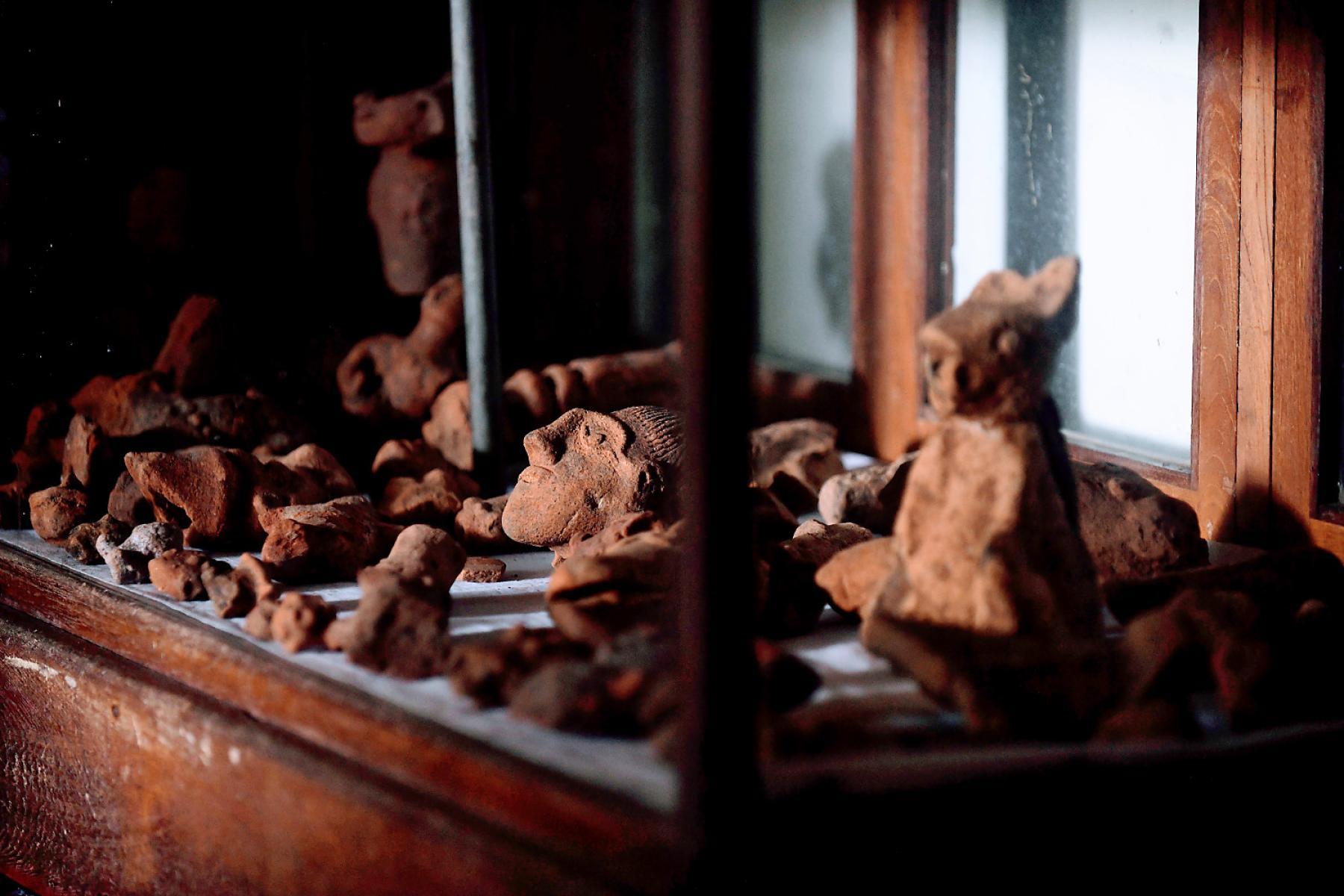The "culture" known as Tabbova-Maradanmaduva, one of the most intriguing mysteries of Sri Lankan archaeology
2023 July 14

BY DR JACQUES SOULIÉ & JANAKA SAMARAKOON
During the 20th century, a series of clay figurines and other artifacts with formal similarities were discovered in various locations in the central-northern part of Sri Lanka.
This area encompasses the Northwestern, North Central, and Central provinces, commonly referred to as the Dry Zone. In the scientific community, these objects are considered to belong to the culture known as 'Tabbova-Maradanmaduva.' The term comes from two of the oldest and most prominent sites where such objects were unearthed. Tabbova-Maradanmaduva is believed to be a parallel culture, obscure yet distinct from the dominant civilization of the country, the Sinhalese and Buddhist civilization, which is fairly well-documented.
The Suriyakantha Cultural Centre possesses a collection of objects from these archaeological discoveries, and this collection could be considered as one of the most significant private collections of these objects in the country. If you happen to visit Kandy, it would be an opportunity to explore these objects, surrounded by a mysterious aura—mysterious because despite a century of scientific interest in these objects, many aspects remain to be clarified to fully unravel its mystery.
Among the discovered artifacts, a consistent presence is observed of fragmented anthropomorphic figurines, phallic objects, animal-shaped forms, pottery, and occasionally bas-reliefs.
With regard to their formal characteristics, the figurines are generally roughly modeled, albeit some exceptions. Reliefs—breasts, noses, eyebrows—are created through additions. Despite the apparent simplicity in execution, some objects exhibit traces indicating a quite minute attention given to detail, such as incised hair seen on one of the anthropomorphic figurines in the Suriyakantha collection, or meticulously executed facial details. The raw nature of most objects reinforces the hypothesis that they originate from folk arts and traditions rather than a well-established school of old masters. Although no discoveries have provided clear clarification regarding their purpose, it is widely accepted that they are cult objects associated with 'animistic' beliefs.
It is worth noting that these discoveries were systematically made in the vicinity of water reservoirs, i.e. artificial lakes that are the hallmark of the Sinhalese civilization in the northern part of the country, where the rhythm of rainfall required a retention system. Additionally, the objects were deposited near paddy fields.
These two elements support the theory that these ritual objects were intended to enhance the efficiency of water supply for agriculture.
Lastly, the excavations conducted so far strongly suggest that these objects were intentionally broken and buried, contributing to their magical function. A similar tradition still persists in Sri Lanka today in the form of a ritual called ‘Gammaduwa,’. Figurines, made specifically for the occasion, are broken and buried during the ceremony while as means to invoke supernatural forces.
The first discovery of these clay objects dates back to 1921. It was made in Puttalam by the English archaeologist A.M. Hocart. This initial unearthing soon followed by another major discovery in Arippu, in the western part of the country, near Mannar, by the same archeologist. Later, the renowned Sri Lankan archaeologist P.E.P. Deraniyagala was responsible for three significant discoveries: Tabbova in 1940, Maradammaduwa in 1953, and Illukuva, near Sigiriya, in 1958.
Despite the formal resemblance of these objects found in various parts of the country, a definitive link between the figurines or the cultures they belong to has not yet been firmly established. The stratigraphic excavations conducted around these findings are relatively recent, which accounts for the decades of divergent opinions regarding dating. For instance, P.E.P. Deraniyagala (1900–1976) proposed that the objects could date back as far as 3000-200 BC, suggesting their association with a pre-Buddhist civilization.
Stratigraphic excavations began in the 2000s. Under the supervision of Professor Robin Coningham, the Department of Archaeology at the University of Durham funded and supervised significant work as part of the project titled 'Anuradhapura (Sri Lanka): The Hinterland (Phase II),'. Within this campaign, optically stimulated luminescence (OSL) dating was performed on a variety of sediments from the Nikawewa site. The examination finally provided an absolute dating for this culture: the 11th century AD, which marks the decline of the Anuradhapura period and effectively concluding nearly eighty-five years of debate on the dating. Moreover, the data collected in this study established that, despite its geographic disparity, the corpus unveils a high degree of stylistic uniformity, supporting the thesis of a formalised ritual structure, parallel to the one promulgated in the island, under the king's patronage, by the Buddhist establishment.
However, without written evidence, the function of these fascinating objects remains uncertain, as do the associated rituals and anticipated advantages. In the years ahead, scientific advancements and new discoveries will hopefully illuminate these aspects.
Bibliography
-
Ariyapala, M.B. 1956. Society in Mediaeval Ceylon. Colombo.
-
Bandaranayake S., Moren, M., Epitawatte S. 1990. The Settlement Archaeology of the Sigiriya-Dambulla Region, Postgraduate Institute of Archaeology, University of Kelaniya.
-
Coningham, R., and all. 2012. Contextualising the Tabbova-Maradanmaduva ‘culture’ : Excavations at Nikawewa, Tirappane District, Anuradhapura District, Sri Lanka. South Asian Studies, Vol. 28, No. 1.
-
Deraniyagala,P.E.P. 1950. The MaradanmaduvaTabbova Culture of Ceylon, Spolia Zeylanica 29 (1)
-
Deraniyagala, P.E.P. 1953. Ferro-lithic or Early historic Terracotta Statuary and a Cist from Ceylon. Spolia Zeylanica 27 (1).
-
Deraniyagala,P.E.P. 1961. Some new records of the MaradanmaduvaTabbova Culture of Ceylon. Spolia Zeylanica 29(2).
-
Deraniyagala, P.E.P. 1972. The age of the Terracotta Objects of the Maradanmaduva Phallic Cult. Ancient Ceylon, 2. 164.
-
Godakumbura, C. 1965. Terra Cotta Heads. Archaeological Department, Colombo.
-
Paranavitana, S. 1970. Inscriptions of Ceylon. Vo.1. Archaeological Department, Colombo.
-
Paranavitana, S. 1946. The stupa in Ceylon. Ceylon Government Press, Colombo.
-
Wijesekera, N. 1962. Early Sinhalese Sculpture. Gunasena, Colombo.
